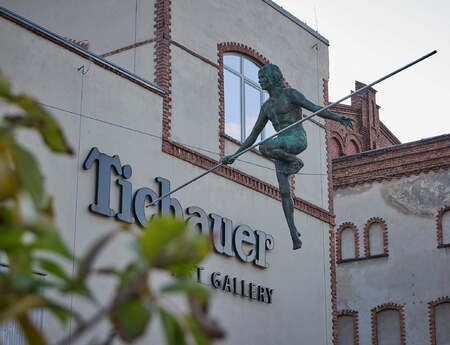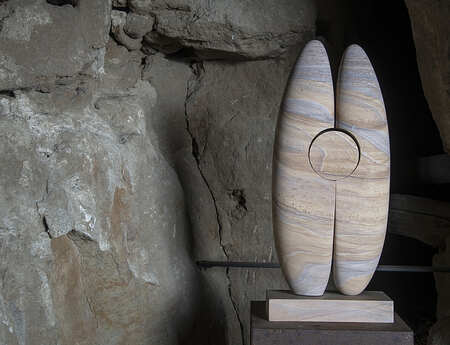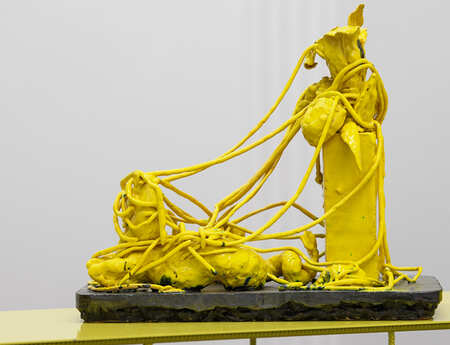Sophie Azzilonna
Untertürkheimer Straße 33
Fellbach
Germany
14th FELLBACH TRIENNIAL OF SMALL-SCALE SCULPTURE
Smallness is a special dimension. With respect to art it implies transportability, closeness to the human body, the handmade, or at the very least a model quality that makes dimensions and relations conceivable. Whether talismans, totems, fetishes, toys, horcruxes or attributes, small sculptures were – and are – very frequently used in direct or close contact with humans or placed in the immediate living space. A closeness between the object and owner or viewer thus arises that is unusual for works of art today, and this intimacy has an impact on the meaning. This is the scale of the archetypical and prototypical. Attention has to be harnessed and turned to it, a closer look is demanded or indeed it compels closer inspection. The idea of the “close up” makes perfect sense because the oldest known works of art by man are from close to Fellbach: the small Ice Age sculptures created some 40,000 years ago found in the Swabian Jura. It is however not clear if the small sculptures were actually made there. In any case, the region is key to understanding art. After the development of Homo sapiens in Africa, and since the last 100,000 years ‘Out of Africa’, in around 40,000 BCE the first anatomically modern humans arrive in today’s Europe. And current theories are now assuming that it was not only climate change that forced the migration, but technological and cultural changes were just as much a motivating force. Today, the few findings allow us only to surmise where art began to develop on these migratory waves. One thing is certain though: art is obviously a fundamental anthropological constant and develops parallel at several places, accompanying humans on their travels. This has recently been underlined by the finding of Ice Age cave paintings from 40,000 years ago in Indonesia. Today, the aspects of three-dimensionality and polarity are being augmented in art as well by multidimensionality, non-linearity, and multipolarity. And yet the question of the human, of human existence has not vanished. On the contrary: the signs of the time point to diversity and hegemony, the masses and the individual, the canon and variety, idealism and materialism, animation and realism, technology and nature, delusion and truth, utopia and dystopia. All simultaneously, all parallel, all interlinked, and either believing in or hating diversity. It is hardly surprising that ideologically exploitable metaphors like “Heimat” are celebrating a revival. That the art world is rediscovering “folklore” in this context is unsurprising, revealing an aspect of the discussion on identity. The idea distilled from this melange of art as a reflection and expression of curiosity and the inquisitive urge, indicated in the project’s subtitle “Museum of Curiosity”, is to be a leitmotif of the 2019 Triennial. The exhibition explores the derivative sources and future perspectives of current art as a carrier of meaningful signifiers for humans. Historical objects, some of them as cast replicas and copies, will be integrated into the presentation. The aim is to appreciatively acknowledge that artists are experts for an intrinsic anthropological urge, to create a work through the interplay of memory and hand, despite and including current considerations on automatization, digitalization, post-humanization, “embodied mind”, and “outer space”. For the first time, the earliest art of humanity will be set in relationship to current art in a large exhibition.
Mehr Infos unter: http://www.triennale.de



